- Home
- Patrick Robinson
H.M.S. Unseen Page 45
H.M.S. Unseen Read online
Page 45
“Right,” said Morgan. “That’s the thinking. Anyway, I’m outta here, so I’m leaving it to you two. Get the computer whizzes to do their thing, and let’s take a look at the routing options ASAP. Also let’s get ahold of a real good hard-copy map, so we can take a careful look and choose the right options. Second-guessing a computer is a dangerous business, but we have to get this dead right. You get any trouble with the goddamned eggheads and their fucking software…you know the kind of thing…resentment at a couple of outsiders like you and Ben…just use my name, and use it hard.”
“You sure it might not be better for you to pave the way yourself, Admiral…one quick phone call before you go.”
“You’re right,” he snapped, picked up a phone, and they heard him in action. Ben Adnam smiled a smile of pure admiration. Bill grinned wistfully, memories drifting back of stressful nights in Fort Meade with the Big Man.
“Right. Admiral Morgan, that’s me. Yup, that’s it…Iraq…all the way north from Basra to the Turkish border…right…take in Syria out to the west…right…that’s it…same thing for the Gulf. And lemme have a chart of the Gulf itself…right…from the Strait of Oman right up to the northern end. Right. WHEN DO I WANT ’EM? NOW… CAR? Forget all about that. Get ’em down here in a chopper. What? FIVE MINUTES AGO. And tell the pilot to keep it running when he gets here, and to pick up Lieutenant Commander Baldridge and his colleague and run ’em down to SUBLANT in Norfolk.”
The admiral banged down the phone, as usual, without missing a beat. “Okay, I guess you got about an hour before he arrives. Meanwhile, work on the details—and then make SUBLANT’s Black Ops cell your headquarters. We’ll probably want one of their boats anyway. The thing is we want this done with a high degree of secrecy, but we need to be fast and efficient. The cell has all the facilities. Get to it…I’ll be at SUBLANT at 1600.” And with that, Arnold Morgan was gone, like a Texas tornado, sweeping all before him, frightening the life out of everyone who stood in his way.
The day passed in a whirlwind of helicopter flights, harassed computer technicians, phone calls, checks and rechecks, satellite communications to the CVBG in the Gulf of Iran, clearances, and the development of a cold-blooded plan to attack the two great dams that keep Iraq alive as a world economic power.
At 1600, both Bill Baldridge and the Iraqi Naval officer were unsurprised when the door to the Black Ops cell burst open and Admiral Arnold Morgan marched in.
“Just tell me we’re on,” he barked. “No bullshit. No major snags.”
“We’re on,” said Bill. “No bullshit.”
“Beautiful.”
“The best news first,” said Bill. “We have a good choice of launch platforms. We can fire from surface ships or submarines, and we can position adequate assets in the northern Gulf or the Med, or both, without any trouble. We got two cruisers in the Med, both available at short notice. And we got two SSNs plus another cruiser out in the Indian Ocean with the Battle Group. The whole lot of ’em can fire these weapons.
“The main drawback in firing from the Med is we have to fly the weapons out there. We’d probably have to use a Fleet Auxiliary stores ship, but that would mean a long surface transit as well, and it might be pretty difficult to hide the sonsabitches.
“If you ask me, it would be a whole lot better to use the platforms in the Indian Ocean. That way we can fly the weapons direct into Diego Garcia and load ’em right there in private. Then it’s 2,700 miles up to the northern end of the Gulf of Iran, leaving us a missile flight of only 400 miles to the most easterly of the dams, flying direct.
“That option would allow us plenty of indirect routing, but we’d have to conceal the launch platforms.
“That means submarines. And because of the number of weapons, that means both of them.”
“Just as well they can both fire the birds, right?” grunted Morgan. “And what about the goddamned birds? Have we got any? Hughes got ’em stowed away somewhere?”
“They sure have. I could hardly believe our luck. They’d gone right through to 24 production models, on the shelf, ready to go. They’re not gonna be cheap. Probably double normal cost, because Hughes wanna get their money back. And you can bet your goddamned life they’ll charge us plenty to make a rush modification. But they can do it and have them ready to ship out in ten days flat.”
“Well get on the horn and do it…NOW!”
“I already have, Admiral. In your name. You got plenty of cash?”
Ben Adnam shook his head, ruefully, at the apparent ease with which the Americans could deploy really major weapons of war, like big guided-missile nuclear submarines, and he pondered briefly all the troubles he had encountered just trying to acquire a diesel-electric submarine for his missions. Aloud he said, “I can’t see much of a problem getting the submarines into the Gulf and up to the launch area around latitude 29 North. But it’s not as deep as we would like up there, especially if we have to evade any opposition. And the high seawater temperature does place limits on maximum reactor power and high speeds.
“On the other hand the Iraqi Navy does not possess any real threat to an American SSN…except in the unlikely event they had a patrol craft lurking right in the launch area. I suppose our COs could either blow it away, or wait a few hours till it left.
“Even after we’ve fired off the missiles, even if the Iraqis were somehow able to trace the flight paths back to our launch area, they still couldn’t do a damn thing about it. They simply do not own a weapons system capable of catching a U.S. SSN. Fortunately, they do not have any allies in the area either. I imagine the Iranians could make things quite awkward for us down in the Strait of Hormuz with their new Kilo. But I can’t see them helping the Iraqis, of all people, can you?”
Bill Baldridge shook his head. “Not a chance,” he said. “But, of the launch areas, the Gulf of Iran wins it hands down…just on the basis of the spare 200 miles range it gives us for a deceptive approach and defense avoidance. Arnold, I could only recommend the Med if you have overriding political reasons.”
“Well, I can think of one overriding political reason why we should consider only the Gulf,” replied the admiral, grinning. “If we let ’em go from the Med, just a little farther to the north, it would look as if they were coming in from Syria. Or, taking a slightly more roundabout route, from Israel, which would have the effect of causing a full-scale war in the Middle East, which no one needs. Let’s just bag the Med and everything to do with it.”
“The same thing would apply to routing the missiles in anywhere from the west,” said Commander Adnam. “But I do have one thought. Surely even the Iraqis know that no one except the U.S.A. can fire this kind of a missile accurately?”
“We’re not sure of that anymore,” said the ex–weapons officer from Kansas. “The Brits have something similar. And the French and the Russians. Probably the Indians and possibly the Iranians. But the Iraqis are gonna look no further than the Americans, so we wanna leave them with a few nice little choices. Then we can sit back and try to let them prove it was us. Which will be just about impossible.”
“If we’re very careful,” said Adnam, smiling. “Oh, by the way, Admiral, we did find out that the water levels in the dams are unusually high all over Iraq. It’s been an unusually hard and wet winter. A lot of flooding.”
Admiral Morgan stood up. “Right,” he said, with an air of finality. “That’s it. I want you to set up to use the south and southeastern approach routes. Send the missiles in along the western foothills from the Iraq-Iran border. East around the Baghdad city defenses is also good sense. If anyone should say anything to us, we’ll just ask politely if they are absolutely sure the Iranians weren’t somehow involved. I don’t think there’s any doubt in any of our minds, the southeast route, the one the computers put up, gives us all the advantages. You’d better get back to the programmers and have ’em produce a few more alternatives, to give us a bit more variation. Otherwise, we’ll have a dozen missiles all flying down a strai
ght line like a fucking clay-pigeon shoot.
“And make sure the goddamned eggheads understand we’re using two launch platforms, firing at the same time, each SSN taking a separate dam, in case one of ’em doesn’t get to the launch area right on time. We don’t want one platform almost taking out two dams but not quite. Much better to hit one, and hit it good, and then let the other SSN bang away at a new target hundreds of miles away an hour later. The computer guys will have to work at it, because we want the individual routings deconflicted. The missiles have to arrive at the respective dams at thirty-second intervals. Both lead missiles hitting at roughly the same time. We’re looking for precision.”
“Aye, sir. You want me to work on these clearances right away?”
“No, Bill. We have to go right to the top on this one. Just get it set up to move into gear, real quick, as soon as I’ve seen the President. Keep it moving, guys. This one’s gonna fly.”
The admiral picked up his briefcase and decided to take just the big chart with him, the one on which Bill Baldridge had sketched out the projected route of the Tomahawk cruise missiles. Then he got on the secure line to Admiral Mulligan, warned him of the broad requirements he was about to make of the U.S. Navy, and told him to meet him in the outer office of the Chairman of the Joint Chiefs in forty-five minutes. The Navy helicopter was already running, as the President’s national security advisor marched resolutely forward, preparing to teach the government of Iraq a very severe lesson.
Inside the Pentagon, Admirals Morgan, Mulligan, and Dunsmore studied the general plan. The launch platforms would be two SSNs, both 7,000-ton boats of the Los Angeles-Class, Cheyenne and Columbia. By 1800 they were ordered into the U.S. Naval Base at Diego Garcia. The loading of 14 modified Tomahawks, prepared and flown direct from San Diego, would take place on Thursday, May 25.
Both submarines would clear DG at first light the following morning, and make their way north to the Gulf, submerged and fast, stopping off for a test-firing of one missile each 600 miles out. They would clear the Strait of Hormuz, and enter the Gulf of Iran on June 1. Moving slower up the Gulf, they were scheduled to arrive in the small hours of June 2. Launch time was dusk—021910JUN06.
Both Cheyenne and Columbia would turn south immediately after the missiles were away and head back to the open waters of the Arabian Sea, which they should reach by midday on Saturday, June 3. By which time the Iraqis should have a great deal more on their minds than the whereabouts of a couple of SSNs, should they make such a connection.
It took only a few minutes to brief Scott Dunsmore. Arnold Morgan was happy. First thing in the morning he and the CJC would go straight to the White House to obtain formal clearance on the plan from the President. Both men assumed this would be instantly forthcoming, since the entire operation was being mounted at the behest of the Chief Executive.
They arrived at 0900. They walked immediately into the West Wing, where a Secret Service agent escorted them to the Oval Office. The President was waiting, and coffee was served as soon as they arrived.
“’Morning, gentlemen,” he said. “Are you going to frighten me to death?”
“Absolutely not, sir,” replied Admiral Morgan. “But we are about to frighten the President of Iraq to death.”
“Could I ask you to inform me of only what I need to know?”
“Certainly.” The Chairman of the Joint Chiefs took over, formally. “In retribution for Iraq’s attack on the Thomas Jefferson, and subsequently for their unwarranted attacks on three civilian airliners, which ended the lives of several United States citizens, including six members of Congress and the Vice President, we intend to strike against that country on Friday evening, June 2. The operation is Black. It will be conducted by the United States Navy and will involve a missile strike against two Iraqi structures. We envision minimal loss of life, but massive economic damage to that country. We estimate it will take up to ten years for them to make a full recovery.”
“Christ, Scott. Are you guys taking out the two big dams?”
“Yessir. How did you guess?”
“Well, a couple of years ago it was the suggestion of our friend Admiral MacLean.”
“It was a good suggestion, too. Like most of his.”
“Yes. In light of the short time frame you must be using missiles?”
“Yessir. Two sets of cruises. Fired top secret by a submarine. Preprogrammed underwater missile approach from the reservoir side of both dams.”
“One of them’s the Samarra Barrage on the Tigris, isn’t it?”
“That’s right, sir. The other’s about five times bigger; it’s called the Darband-I-Khan.”
“Ah, yes. I remember now. Well, I don’t know if we’ll be accused of international banditry, but I assume our policy is to say absolutely nothing.”
“Correct, sir,” replied Admiral Morgan. “We’ll just let those bastards understand who they can fuck with and who they can’t. But we cannot allow the flag of this nation to be fired upon by anyone. Not without massive retribution from us.”
“My sentiments entirely. These rogue regimes are gonna learn it the hard way. They either play by the very fair rules laid down by us, or we’ll make them wish they had. By the way, might I judge from the expeditious manner this has been set up that we received help from an…er…unusual source.”
“You may, sir.”
“Thank you, gentlemen. I’ll look forward to the evening news a week Friday.”
021840JUN06. USS Columbia. 28.55N, 49.48E.
Periscope depth. Course 315. Speed 5.
Commander Mike Krause, conscious of the critical nature of his mission, and of the proximity of the sea bottom to his keel, had checked on the underwater telephone. Commander Tom Jackson’s Cheyenne ran quietly 500 yards on his starboard beam, same course, speed, and depth. Both SSNs were on top line to fire. Tubes ready. A hundred checks have been made, the missile men had completed all the prefiring routines and settings. There must be no mistakes, barring missile malfunction or enemy action. The preprogramming was immaculate. The big self-guided Tomahawks were ready to do their catastrophic job.
At 1845 precisely, Commander Krause ordered, “Stand by tubes one to six.”
Then, “TUBE ONE, LAUNCH.” And the first of the specially modified SLCM Tomahawks blew out of the submarine, slid up to the surface, and roared into the black night sky, adjusting course at its cruise altitude of 50 feet above the water, heading north, a fiery tail crackling out behind for the first few seconds of its flight. And then it hit flying speed, and the gas turbines cut in, leaving no telltale trail in the sky. Nothing could stop it. At least nothing in the maritime armories of the Gulf nations.
Within four minutes, the remaining five missiles had screamed onward and upward, all under the control of the launch sequencer. All fired at exact, but different, intervals, each one designed for the specific route of each Tomahawk. No matter what the route variations, the big cruise missiles would arrive on their target, from their separate flight paths, precisely thirty seconds apart.
Next the Tomahawks, in a murderous salvo of destruction, fanned out and hurtled above the dark waters of the Gulf. Though Mike Krause could not tell, they were surprisingly quiet as well as fast. Once they were over land they could scarcely be heard at all before they were already past. Too late. Much too late for the Dar-band-I-Khan dam.
At 1850 Commander Krause heard that Cheyenne had also completed her firing sequence. Commander Jackson had drawn a long-range bead on the Samarra Barrage. Missiles away, the Americans were to get out of the Gulf of Iran. Mike Krause ordered Columbia sharply around to the southeast, coordinating his turn with the other SSN. And the two Black Ops submarines headed off together 500 yards apart.
By dawn, both boats would be creeping softly through the Strait of Hormuz, deep, fast, and in the center of the channel, the safety separation, 100 feet in depth. Soon the Gulf of Oman would shelf away to the unfathomable sandy depths of the Arabian Sea. The Americans would angle to
the right there, running south, down the coast of Oman, passing almost directly over the shattered tomb of HMS Unseen.
022015JUNE06. 35.07N, 45.42E.
The guard room, western
end of the great wall of the Darband-I-Khan dam.
Corporal Tariq Nayif, at the age of twenty-one, was the duty soldier charged with walking out along the wall to the halfway point and back every half hour during his four-hour watch. The eastern half of the wall was patrolled from the guard room on the other side.
Tariq’s immediate superior, Staff Sergeant Ali Hasan, a veteran Iraqi combat soldier in charge of the western guardhouse, was resting until midnight. The officer on duty, Second Lieutenant Rashid Ghazi, was reading, which left Tariq out on the wall on his own. Armed with his standard-issue Russian Kalashnikov, but nonetheless alone. To his right there was low wall, and a yawning 500-foot drop to the River Diyala, to his left the still dark waters of the reservoir. The wall was well lit all the way across, and swept by a personnel surveillance radar and infrared detectors at all times. There was a television picture showing their end of the wall in Tariq’s guardhouse.
Like every night, it was cool, silent, and peaceful up there in the mountains. Tariq wore a greatcoat, hat, and gloves, as he walked slowly toward the east, his steel-tipped boots making an unusually loud noise above the gusting wind that blew directly into his face. Tariq was not a Kurd, and it was beyond his understanding why anyone should want to live up here in the cold, barren peaks of northeastern Iraq.
There were other things beyond his understanding on this night, principally the fact that less than 150 yards away, already 70 feet below the surface, a big American-built cruise missile, with a thumping 500kg warhead, was quietly making its final approach to the front of the wall, to a detonation point down at the base of the dam. It was still making 10 knots through the water, and would explode with shuddering impact, 100 feet below where Tariq stood.

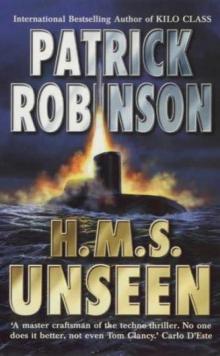 H.M.S. Unseen am-3
H.M.S. Unseen am-3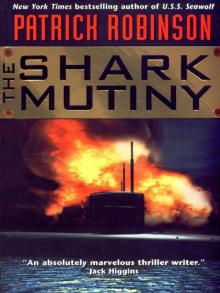 The Shark Mutiny (2001)
The Shark Mutiny (2001)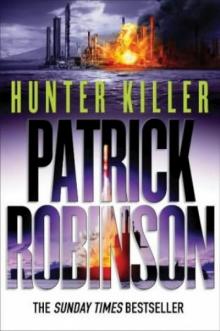 Hunter Killer am-8
Hunter Killer am-8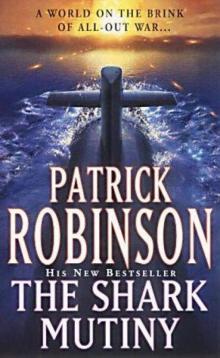 The Shark Mutiny am-5
The Shark Mutiny am-5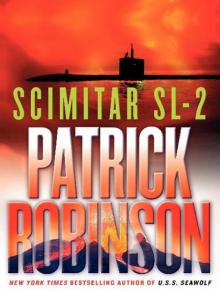 Scimitar SL-2
Scimitar SL-2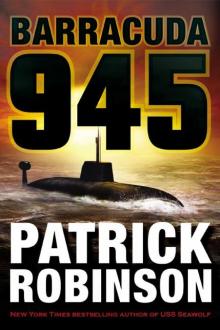 Barracuda 945 am-6
Barracuda 945 am-6 Hunter Killer
Hunter Killer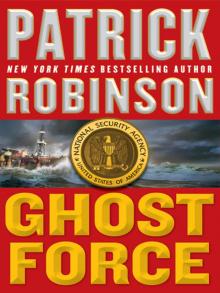 Ghost Force
Ghost Force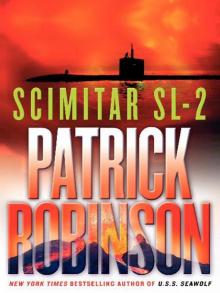 Scimitar SL-2 (2004)
Scimitar SL-2 (2004) Kilo Class am-2
Kilo Class am-2 The Lion of Sabray
The Lion of Sabray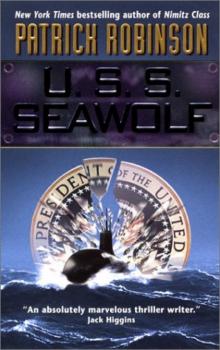 U.S.S. Seawolf am-4
U.S.S. Seawolf am-4 Ghost Force am-9
Ghost Force am-9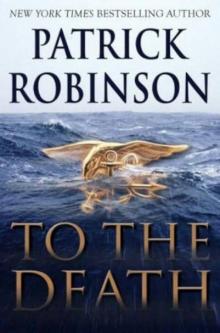 To the Death am-10
To the Death am-10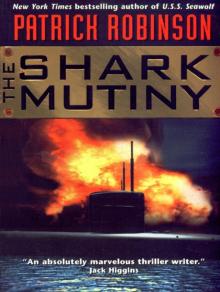 The Shark Mutiny
The Shark Mutiny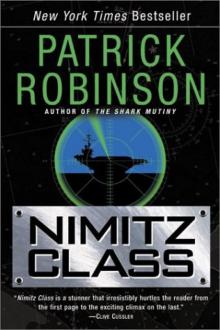 Nimitz Class am-1
Nimitz Class am-1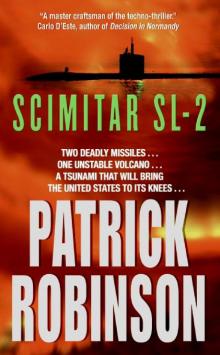 Scimitar SL-2 am-7
Scimitar SL-2 am-7 Barracuda 945
Barracuda 945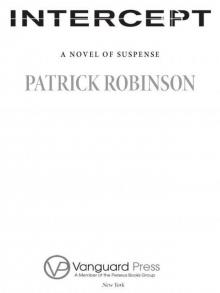 Intercept
Intercept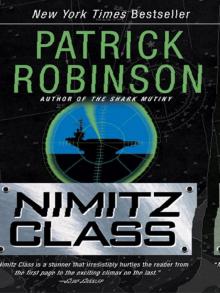 Nimitz Class (1997)
Nimitz Class (1997)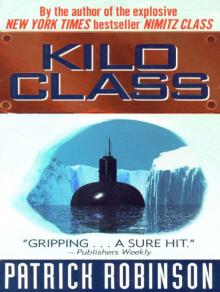 Kilo Class
Kilo Class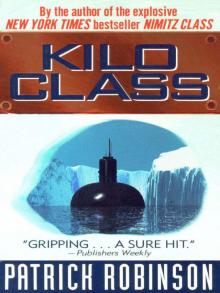 Kilo Class (1998)
Kilo Class (1998) Diamondhead
Diamondhead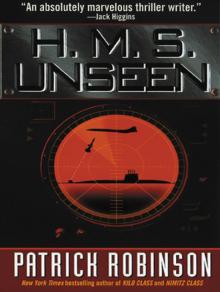 H.M.S. Unseen
H.M.S. Unseen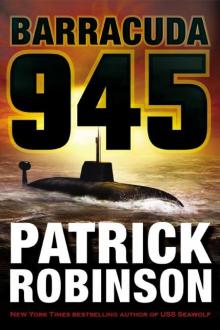 Barracuda 945 (2003)
Barracuda 945 (2003)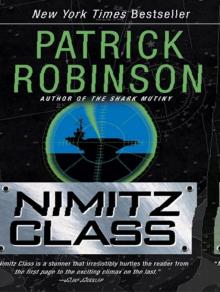 Nimitz Class
Nimitz Class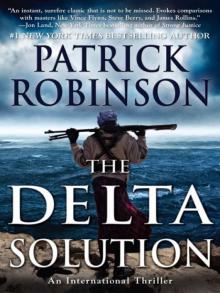 The Delta Solution
The Delta Solution U.S.S. Seawolf
U.S.S. Seawolf